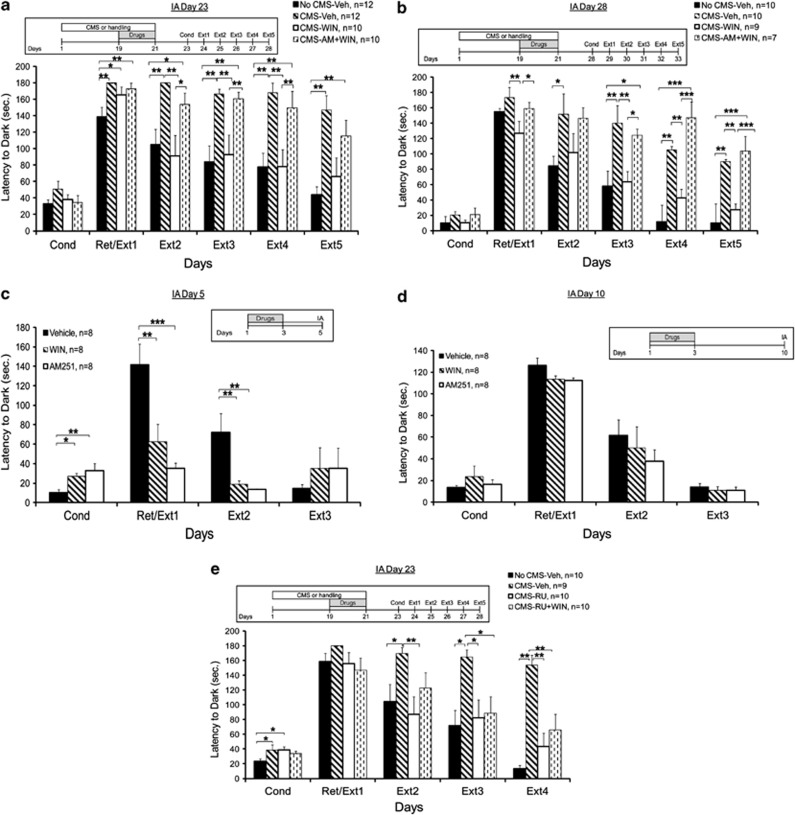Figure 1.
WIN55,212-2 prevents the CMS-induced impairment in extinction. (a) When tested on day 23, the No CMS-Veh group demonstrated decreased latency compared with all the groups on Ext1. On Ext2, Ext3, and Ext4, the No CMS-Veh and CMS-WIN groups demonstrated decreased latency compared with the CMS-Veh and CMS-WIN+AM groups. On Ext5, the No CMS+Veh group demonstrated decreased latency compared with the CMS+Veh and CMS+WIN+AM groups (*p<0.05; **p<0.01). (b) When tested on day 28, the CMS-WIN group demonstrated decreased latency compared with the CMS-Veh and CMS+WIN+AM group on Ext1. On Ext2, the No CMS+Veh group demonstrated decreased latency compared with the CMS-Veh. On Ext3, Ext4, and Ext5, the No CMS+Veh and CMS+WIN groups demonstrated decreased latency compared with the CMS-Veh and CMS+WIN+AM groups (*p<0.05; **p<0.01; ***p<0.001). (c) When the drugs were injected with no stress exposure 2 days before conditioning, the Vehicle group demonstrated decreased latency compared with the other groups on Cond and increased latency on Ext1 and Ext2 (*p<0.05; **p<0.01; ***p<0.001). (d) When WIN55,212-2 or AM251were injected without stress exposure a week before conditioning, conditioned avoidance and extinction levels were not significantly different from the vehicle-treated rats. (e) When tested on day 23, the No CMS-Veh group demonstrated decreased latency compared with the CMS-Veh and CMS-RU groups on Cond. On Ext2, the CMS-Veh group demonstrated increased latency compared with the No CMS-Veh and CMS-RU groups. On Ext3 and Ext4, the CMS-Veh group demonstrated increased latency compared with all the groups (*p<0.05; **p<0.01).

